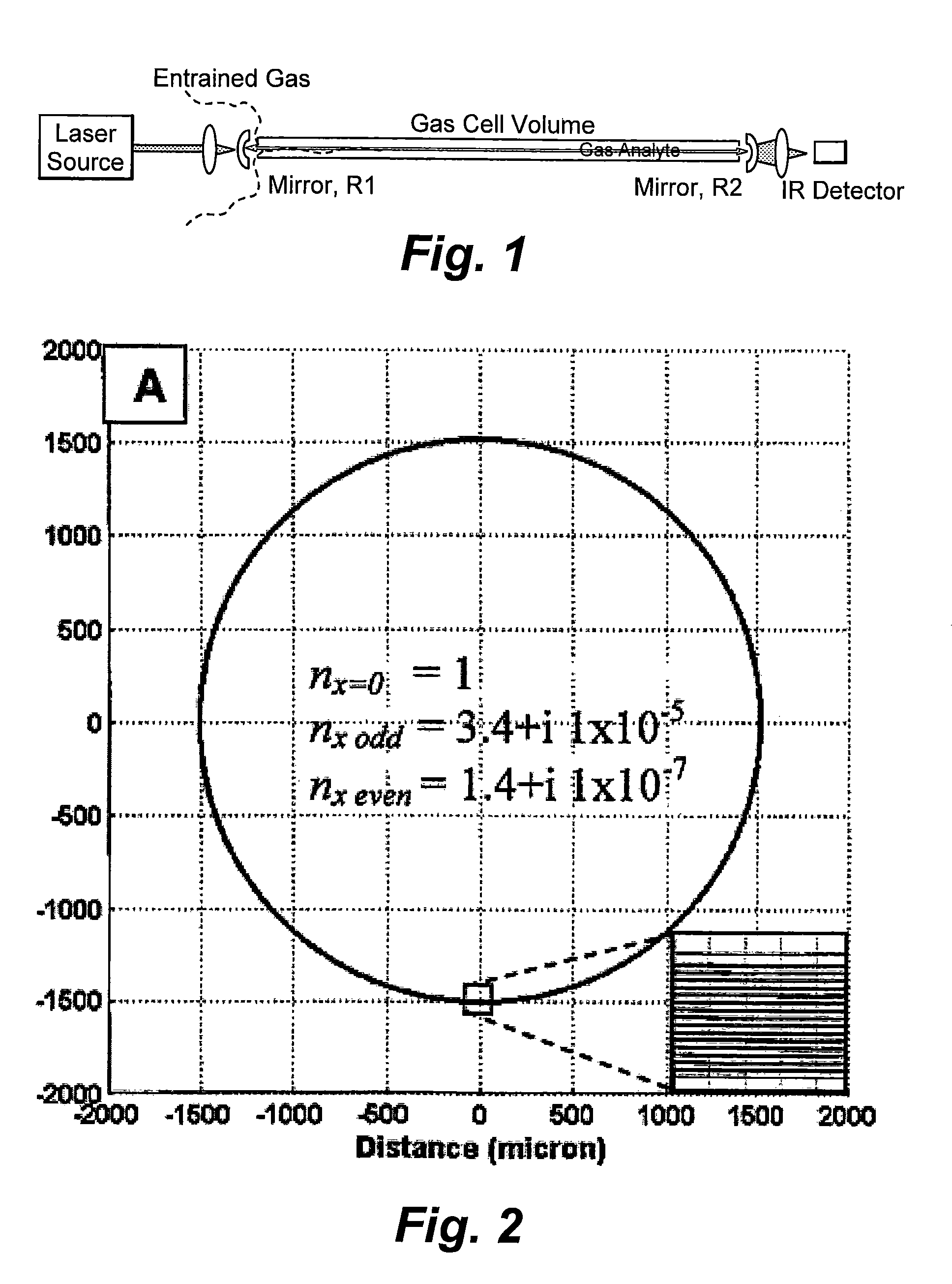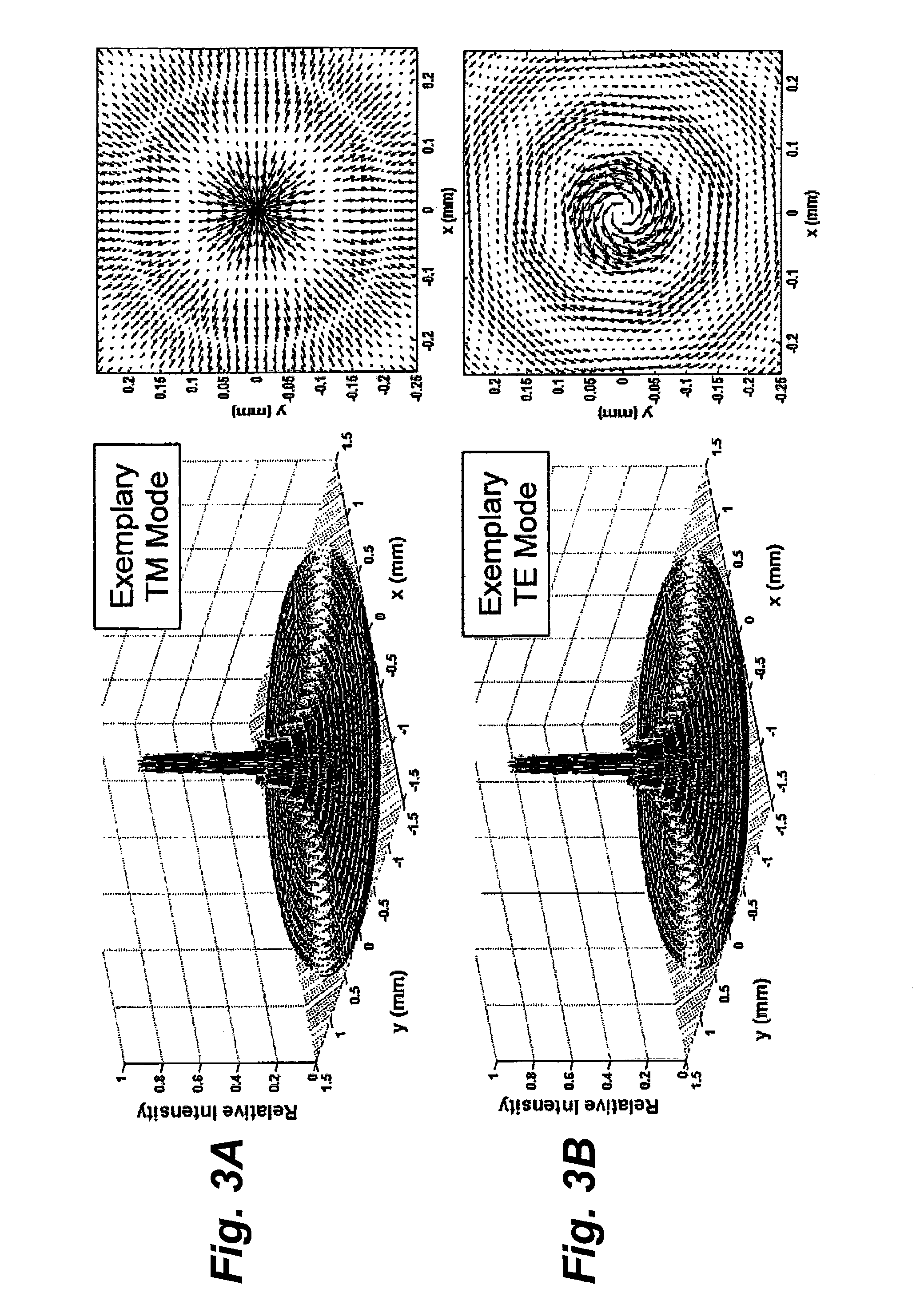Hollow waveguide cavity ringdown spectroscopy
a ring-down spectroscopy and hollow waveguide technology, applied in the field of gas concentration measurement, can solve the problems of reducing the complexity of the apparatus considerably, limiting the sensitivity of the p-crds measurement, and the p-crds is very sensitive to coupling efficiency, so as to increase the cavity energy, reduce the requirement for cavity-to-laser tuning, and greatly increase the spectral spacing between cavity modes
- Summary
- Abstract
- Description
- Claims
- Application Information
AI Technical Summary
Benefits of technology
Problems solved by technology
Method used
Image
Examples
example
[0059]A HWG for use at 1.66 μm was designed and manufactured. The 1.66 μm HWG allowed measurements of CH4 on the 2ν3 overtone absorption band. An external cavity tunable diode laser, Sacher Lasertechnik Lion Laser (TEMTEC-500-1630-31650) was used with internal piezoelectric modulation of the laser frequency at 1 kHz. The piezoelectric tuning was set to sweep through approximately one free spectral range of an open cell cavity longitudinal mode of the length of the hollow waveguide cavity. A small portion of the laser energy was sampled and directed to a wavemeter (Bristol 621A-NIR), which recorded the average laser frequency at a rate of 4 Hz, using a 20× microscope objective and a single mode fiber. The TEC laser operated in the range of 1573-1675 nm with peak output power >3 mW and bandwidth <5 MHz (20s) and typically <0.5 MHz (50 ms).
[0060]The laser beam was directed by free space optics and focused into the cavity. The cavity was formed by two Newport Ultra-Low Loss SuperMirrors...
PUM
| Property | Measurement | Unit |
|---|---|---|
| diameter | aaaaa | aaaaa |
| length | aaaaa | aaaaa |
| propagation angle | aaaaa | aaaaa |
Abstract
Description
Claims
Application Information
 Login to View More
Login to View More - R&D
- Intellectual Property
- Life Sciences
- Materials
- Tech Scout
- Unparalleled Data Quality
- Higher Quality Content
- 60% Fewer Hallucinations
Browse by: Latest US Patents, China's latest patents, Technical Efficacy Thesaurus, Application Domain, Technology Topic, Popular Technical Reports.
© 2025 PatSnap. All rights reserved.Legal|Privacy policy|Modern Slavery Act Transparency Statement|Sitemap|About US| Contact US: help@patsnap.com



